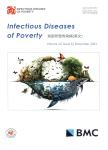TransCode:Uncovering COVID-19 transmission patterns via deep learning
TransCode: Uncovering COVID-19 transmission patterns via deep learning作者机构:Department of Computer ScienceHong Kong Baptist UniversityHong Kong SARChina
出 版 物:《Infectious Diseases of Poverty》 (贫困所致传染病(英文))
年 卷 期:2023年第12卷第1期
页 面:82-101页
核心收录:
学科分类:1004[医学-公共卫生与预防医学(可授医学、理学学位)] 1002[医学-临床医学] 1001[医学-基础医学(可授医学、理学学位)] 08[工学] 081104[工学-模式识别与智能系统] 100401[医学-流行病与卫生统计学] 0811[工学-控制科学与工程] 10[医学]
基 金:the Ministry of Science and Technology of the People’s Republic of China(2021ZD0112501,2021ZD0112502) the Research Grants Council of Hong Kong SAR(RGC/HKBU12201318,RGC/HKBU12201619,RGC/HKBU12202220) the Guangdong Basic and Applied Basic Research Foundation(2022A1515010124).
主 题:COVID-19 Densely populated regions Spatiotemporal transmission dynamics and heterogeneity Meta-population Human mobility and contact behaviors TransCode Deep transfer learning
摘 要:Background The heterogeneity of COVID-19 spread dynamics is determined by complex spatiotemporal transmission patterns at a fine scale,especially in densely populated regions.In this study,we aim to discover such fine-scale transmission patterns via deep learning.Methods We introduce the notion of TransCode to characterize fine-scale spatiotemporal transmission patterns of COVID-19 caused by metapopulation mobility and contact behaviors.First,in Hong Kong,China,we construct the mobility trajectories of confirmed cases using their visiting records.Then we estimate the transmissibility of individual cases in different locations based on their temporal infectiousness distribution.Integrating the spatial and temporal information,we represent the TransCode via spatiotemporal transmission networks.Further,we propose a deep transfer learning model to adapt the TransCode of Hong Kong,China to achieve fine-scale transmission characterization and risk prediction in six densely populated metropolises:New York City,San Francisco,Toronto,London,Berlin,and Tokyo,where fine-scale data are limited.All the data used in this study are publicly available.Results The TransCode of Hong Kong,China derived from the spatial transmission information and temporal infectiousness distribution of individual cases reveals the transmission patterns(e.g.,the imported and exported transmission intensities)at the district and constituency levels during different COVID-19 outbreaks waves.By adapting the TransCode of Hong Kong,China to other data-limited densely populated metropolises,the proposed method outperforms other representative methods by more than 10%in terms of the prediction accuracy of the disease dynamics(i.e.,the trend of case numbers),and the fine-scale spatiotemporal transmission patterns in these metropolises could also be well captured due to some shared intrinsically common patterns of human mobility and contact behaviors at the metapopulation level.Conclusions The fine-scale transmission patterns due to the metapopulation level mobility(e.g.,travel across different districts)and contact behaviors(e.g.,gathering in social-economic centers)are one of the main contributors to the rapid spread of the virus.Characterization of the fine-scale transmission patterns using the TransCode will facilitate the development of tailor-made intervention strategies to effectively contain disease transmission in the targeted regions.



